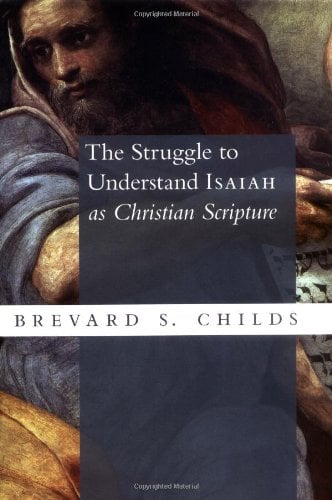Sadly, we do not have much from John Chrysostom (ca. 349-407 A.D.) on Isaiah. This is a great pity because in my view he was the greatest exegete of the early church. We do have five or six Homilies on Isaiah but they are not focused on the exegesis of the text of Isaiah but rather presuppose that work Chrysostom had done earlier, and instead concentrate on the moral application of the material to a Christian audience. Yes, an Armenian version of the complete commentary by Chrysostom did surface in the 19th century, but there is much dispute about whether it is even genuinely from Chrysostom. Some French scholars say yes, most others have serious doubts. What we do have is a Greek fragment of his commentary that encompassing Is. 1.8-8.10. While Chrysostom’s homilies on Isaiah are highly rhetorical in character, the commentary seems much less embellished, but not without eloquent turns of phrase. Chrysostom shows literary sensitivity realizing one should not interpret metaphors of Isaiah literally. To “take every phrase literally would be to render meaning impossible”.
Chrysostom comments on the LXX and does not seem to have personal knowledge of the Hebrew. He does not deal much with text critical issues, but he does realize one has to pay attention to the various different audiences Isaiah addresses with different oracles. He does not cite earlier commentators, but reflects some knowledge of them, and he does not draw in Greco-Roman references much. Clearly, Chrysostom stands in the school of Antioch when it comes to interpretation but he does not totally rule out allegory. What he says, in dealing with the song of the vineyard in Is. 5 is “this is everywhere a rule in Scripture: when it wants to allegorize, it tells the interpreters of the allegory, so that the passage will not be interpreted superficially”. He adds “We ourselves are not the lords over the rules of interpretation, but must pursue Scripture’s understanding of itself, and in that may make use of the allegorical method.” Chrysostom is not for allegorizing non-allegorical materials in the Scripture, but one can and must recognize the figurative dimension implied by the text itself. One of the interesting features of Chrysostom’s interpretation of Is. 6 is he invokes the principle of divine condescension (sunkatastasis). By this he means that God reveals himself in ways that condescend to our human level of understanding. So, the reference to God’s robe in Isaiah should not be taken literally, its just God adapting his revelation to human capacity. Chrysostom does invoke a double sense in Scripture. It has a meaning for its immediate audience, but it also has an eschatological sense which only becomes clear in the light of the fulfillment of the prophecy later in Christ or in the Christian era. Childs is right that Chrysostom had a considerable gift of relating the moral thrusts of the prophetic witness of Isaiah to the same sort of moral issues in his own day, so for example when Isaiah attacks the bribery, ignorance, oppressive rule, and greed of the rulers of Jerusalem, Chrysostom is easily able to critique the rulers in Antioch with this material, and it cost him. Indeed, after a tumultuous period of preaching in Constantinople, he ended his life in exile, and it that too, he could personally identify with the text of Isaiah. The prophet still spoke into his own contemporary situations without loss of force or meaning.













